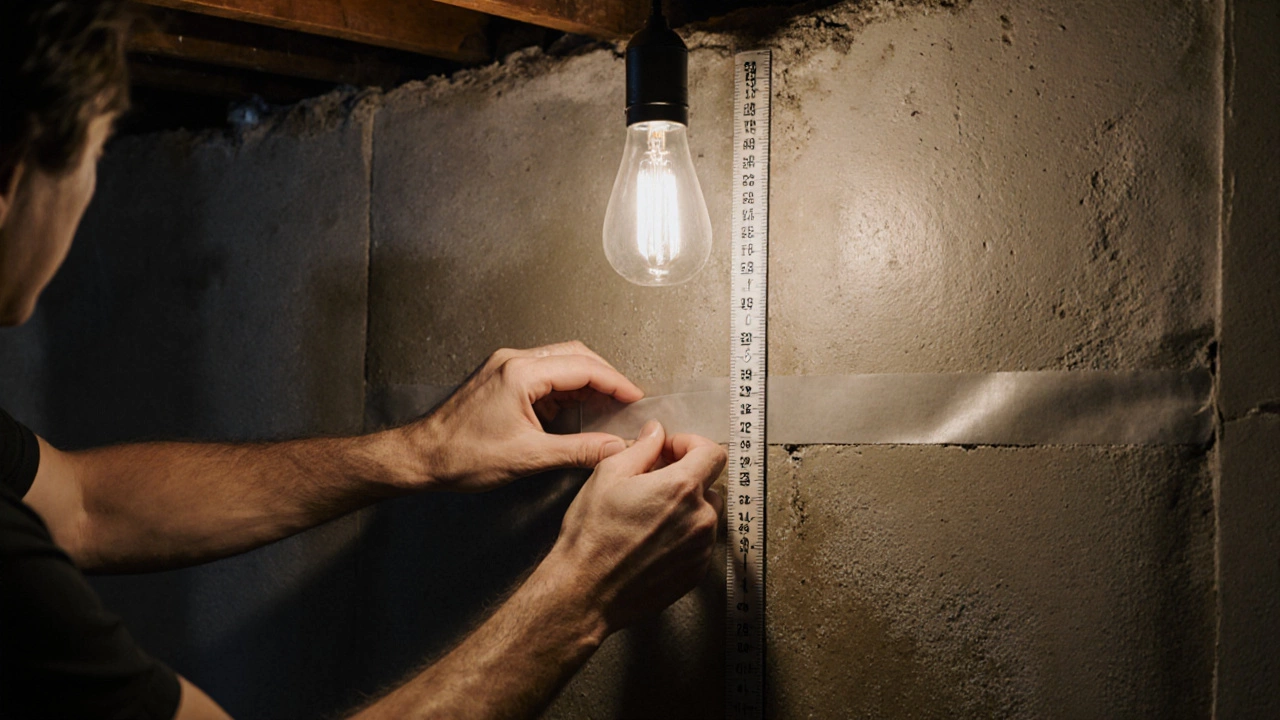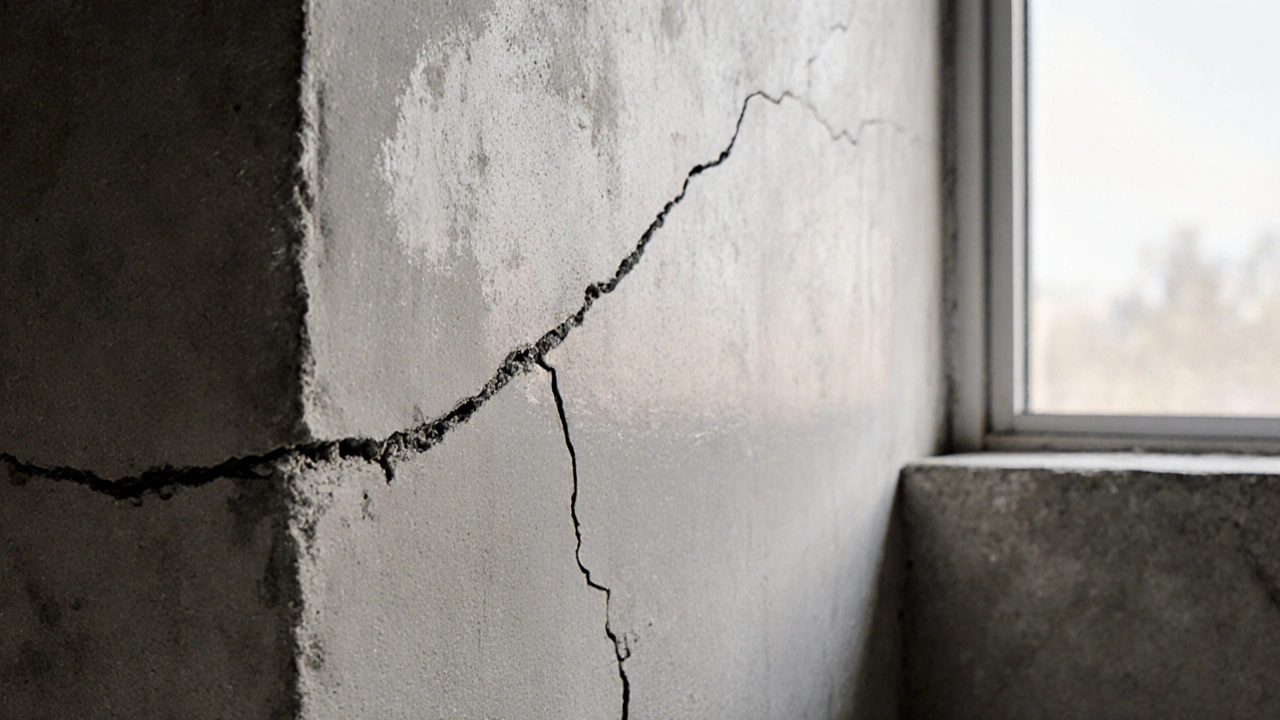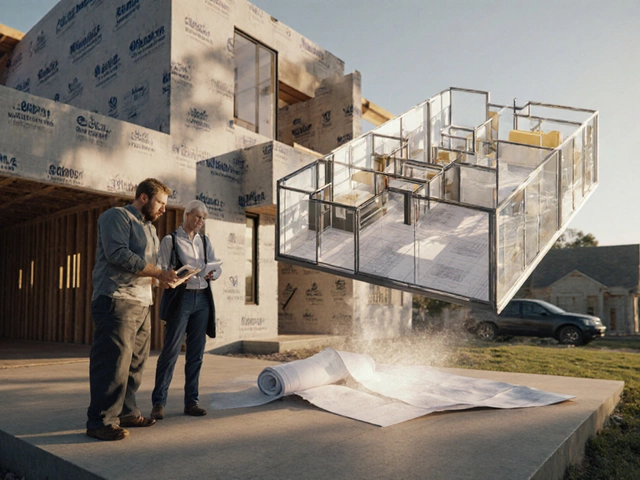Foundation Crack Safety Calculator
Assess Your Foundation Crack
Result
Cracks in your foundation don’t always mean disaster. But they also don’t always mean you can wait until next summer to call someone. The truth is, not all cracks are created equal. Some are harmless. Others are warning signs you can’t afford to ignore. If you’ve noticed a crack in your basement wall or along the garage floor, you’re probably wondering: what size crack is acceptable in a foundation? Let’s cut through the noise and give you straight answers based on real-world inspections in homes across Vancouver’s geologically active areas.
Hairline Cracks: Usually Nothing to Worry About
If the crack is thinner than a credit card-about 1/16 inch or less-it’s almost certainly a shrinkage crack. These form when concrete cures and pulls away from itself as it dries. They’re common in newer homes (under 5 years old) and rarely spread. You’ll often see them near windows, corners, or where the foundation meets the slab. They don’t let water in, don’t widen over time, and don’t affect structural integrity.
These cracks are normal. You can seal them with a concrete caulk if they bother you visually, but there’s no structural need to repair them. Many homeowners in Surrey and Burnaby see these after their first winter and panic. They don’t need to.
Crack Width Between 1/16 and 1/8 Inch: Monitor Closely
Cracks in this range are a gray zone. They’re wider than typical shrinkage cracks but still too narrow to be an immediate emergency. This is where most homeowners get confused. A 1/8-inch crack (about the width of a pencil lead) might be harmless-or it might be the start of something serious.
Look at these three things:
- Is it growing? Tape a piece of clear tape across the crack. Check it every month. If the tape tears or the crack extends beyond it, you’ve got movement.
- Is it horizontal? Vertical cracks are usually shrinkage or settling. Horizontal cracks? That’s a red flag. They often mean soil pressure is pushing the wall inward-common in homes with clay-rich soil, like those in the Fraser Valley.
- Is water coming through? Even a thin crack can let moisture in if it’s below grade. Dampness, efflorescence (white chalky residue), or mold nearby means you need to act.
If none of these signs are present, you can monitor for 6-12 months. If any appear, call a foundation specialist. Don’t wait for it to get bigger.
Cracks Wider Than 1/8 Inch: Time to Act
Once a crack hits 1/8 inch or wider, you’re in danger territory. At this point, the foundation is shifting in a way that can’t be explained by normal settling. Cracks this wide often mean:
- Soil expansion from freezing or heavy rain pushing against walls
- Uneven settling due to poor compaction during construction
- Tree roots growing under the slab
- Hydrostatic pressure from poor drainage
In Vancouver, where many homes sit on slopes or near waterways, these issues are common. A 1/4-inch crack (the width of a nickel) is a clear signal that structural movement is happening. At this size, doors and windows may start sticking. Floors might slope noticeably. You might hear new creaks or pops in the walls.
These cracks won’t heal themselves. Left alone, they can lead to wall bowing, which can eventually cause collapse. In extreme cases, insurance companies will deny claims if they find you ignored visible damage for more than a year.
Horizontal Cracks Are Always a Problem
No matter the width, horizontal cracks in foundation walls are never acceptable. They’re not about settling. They’re about pressure. When soil swells after heavy rain or snowmelt, it pushes sideways against the wall. If the wall isn’t reinforced enough, it starts to bend inward.
You’ll often see these on basement walls, especially in homes built before 1990. They might start as a thin line, but they grow quickly. If you see a horizontal crack-even if it’s only 1/16 inch wide-get it inspected within 30 days. The longer you wait, the more expensive the fix becomes. Steel beams or carbon fiber straps are often needed to stabilize the wall. Waiting can turn a $3,000 repair into a $15,000 wall replacement.

Stair-Step Cracks: A Sign of Serious Settlement
These look like steps going up or down along brick or block foundations. They follow the mortar joints and are often caused by uneven settling of the foundation footings. This isn’t just a surface issue-it means part of your house is sinking faster than another.
Stair-step cracks wider than 1/4 inch almost always require underpinning or pier installation. In the Lower Mainland, homes built on fill soil (common in Richmond and Delta) are especially prone to this. If you notice these cracks along with sloping floors, sticking doors, or gaps between walls and ceilings, you’re looking at a major repair.
What Happens If You Ignore It?
Some people think, “It’s just a crack. I’ll paint over it.” That’s like putting a bandage on a broken bone. Ignoring foundation cracks leads to:
- Water intrusion → mold, rot, ruined drywall
- Structural instability → walls leaning, floors buckling
- Lower home value → buyers walk away or demand huge discounts
- Insurance denial → most policies won’t cover damage from long-term neglect
A 2023 study by the Canadian Foundation Institute found that homes with unaddressed cracks over 1/8 inch lost an average of 18% in resale value. In Vancouver’s market, that’s tens of thousands of dollars.
When to Call a Professional
You don’t need to panic over every crack-but you do need to know when to call in help. Here’s when to book an inspection:
- Crack is wider than 1/8 inch
- Crack is horizontal
- Crack is growing (check with tape)
- Water, mold, or efflorescence is visible
- Doors or windows won’t close properly
- Stair-step cracks appear
A certified foundation inspector will use a crack gauge, moisture meter, and laser level to measure movement over time. They’ll also check drainage, soil conditions, and wall alignment. Don’t rely on a general contractor for this. You need someone who specializes in foundations.

Prevention Is Cheaper Than Repair
The best way to avoid big cracks is to manage water. Most foundation problems start with poor drainage. Here’s what you can do:
- Keep gutters clean and extend downspouts at least 6 feet from the house
- Grade soil away from the foundation (at least 1 inch per foot for 6 feet)
- Install or maintain a French drain if you’re on a slope
- Don’t plant large trees within 10 feet of the foundation
- Check for plumbing leaks under slabs-these can soften soil and cause sinking
These steps cost less than $500 and can prevent a $20,000 repair. In Vancouver’s rainy climate, water management isn’t optional-it’s survival.
Final Rule of Thumb
Here’s the simplest way to decide: if you can fit a dime into the crack, it’s too wide. If you can see daylight through it, you’re already in trouble. If you’re unsure, get it checked. Foundation repairs are never cheap, but they’re infinitely cheaper than living in a house that’s slowly falling apart.
Can a foundation crack repair itself?
No, foundation cracks do not repair themselves. Concrete doesn’t heal like skin. Even small cracks can widen due to freeze-thaw cycles, soil pressure, or water infiltration. What looks like a closed crack might just be dirt or paint covering ongoing movement. Always assume a crack is active until proven otherwise by a professional inspection.
Is it normal for a 10-year-old house to have foundation cracks?
Minor vertical shrinkage cracks are normal in homes up to 10 years old, especially if they’re thin (under 1/16 inch) and don’t leak or grow. But if you’re seeing multiple cracks, horizontal lines, or cracks wider than 1/8 inch, that’s not normal settling-it’s structural movement. Homes built on unstable soil or with poor footings can show signs early, even within five years.
Will homeowners insurance cover foundation crack repairs?
Most standard policies exclude damage from gradual settling, poor drainage, or lack of maintenance. They may cover sudden events like a burst pipe causing soil erosion, but not cracks from long-term water exposure or soil pressure. If you waited too long to fix a visible crack, insurers can deny claims entirely. Always document damage early and keep repair records.
How much does it cost to fix a foundation crack in Vancouver?
Costs vary widely. Sealing a hairline crack with epoxy might cost $300-$600. Repairing a 1/4-inch crack with carbon fiber straps runs $1,500-$3,000. If the wall is bowing or the foundation has settled, underpinning with steel piers can cost $10,000-$25,000. The key is catching it early-waiting doubles or triples the price.
Can I fix a foundation crack myself?
You can seal small, non-structural cracks (under 1/16 inch) with a concrete caulk or epoxy injection kit from a hardware store. But if the crack is wider, horizontal, or growing, DIY fixes are temporary at best. They hide the problem, not solve it. Improper sealing can trap moisture behind the wall and make things worse. Always consult a professional before attempting repairs on cracks larger than a credit card.
Next Steps: What to Do Today
Here’s your simple action plan:
- Grab a ruler or credit card. Measure the widest part of the crack.
- Take a photo and mark the date on it.
- Place a piece of clear tape across the crack.
- Check it again in 30 days. Did it change?
- If it’s wider than 1/8 inch, or if it’s horizontal, call a foundation specialist.
Foundation problems don’t get better with time. They get worse. But catching them early means you keep your home safe-and your wallet intact.








